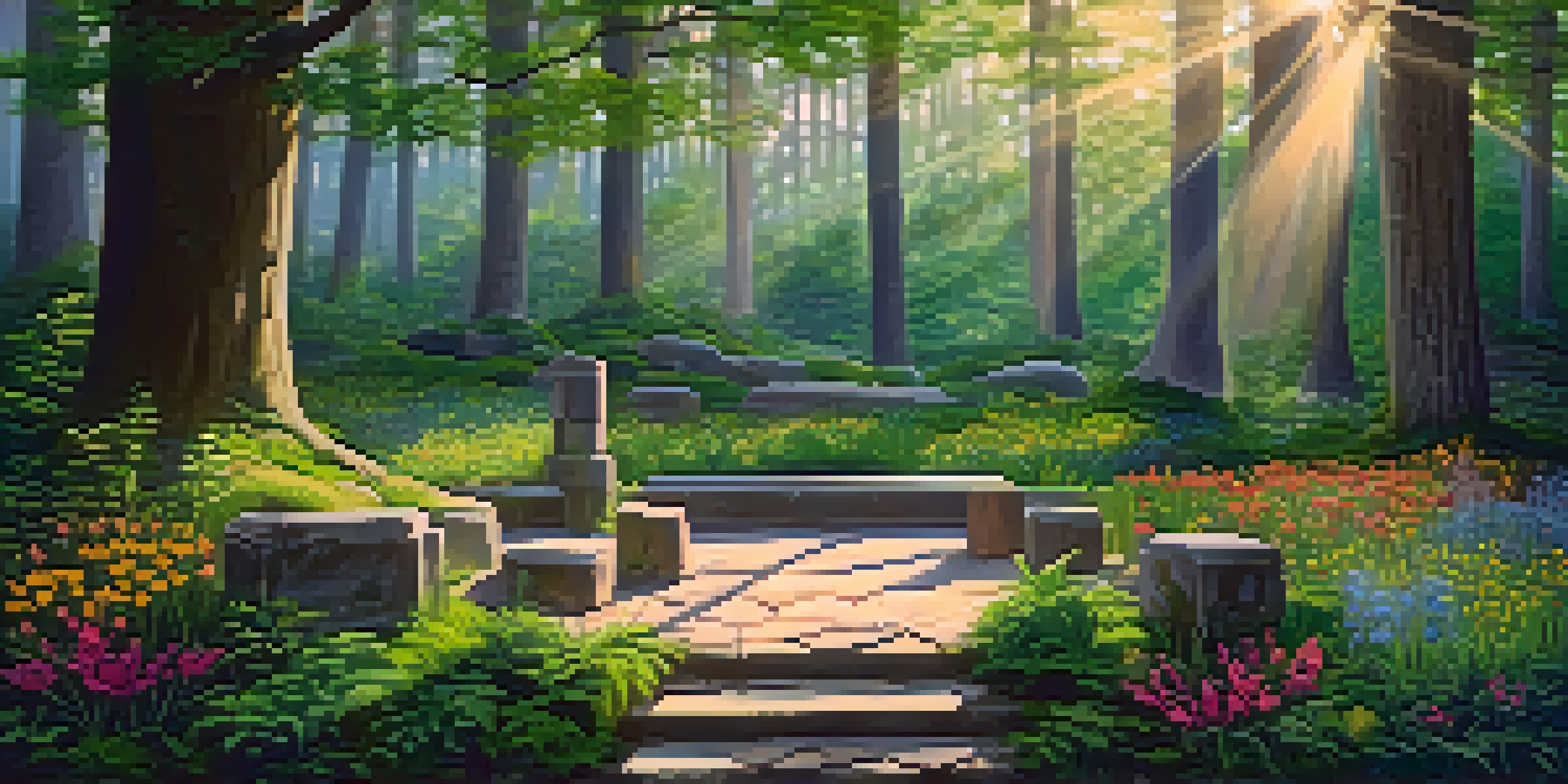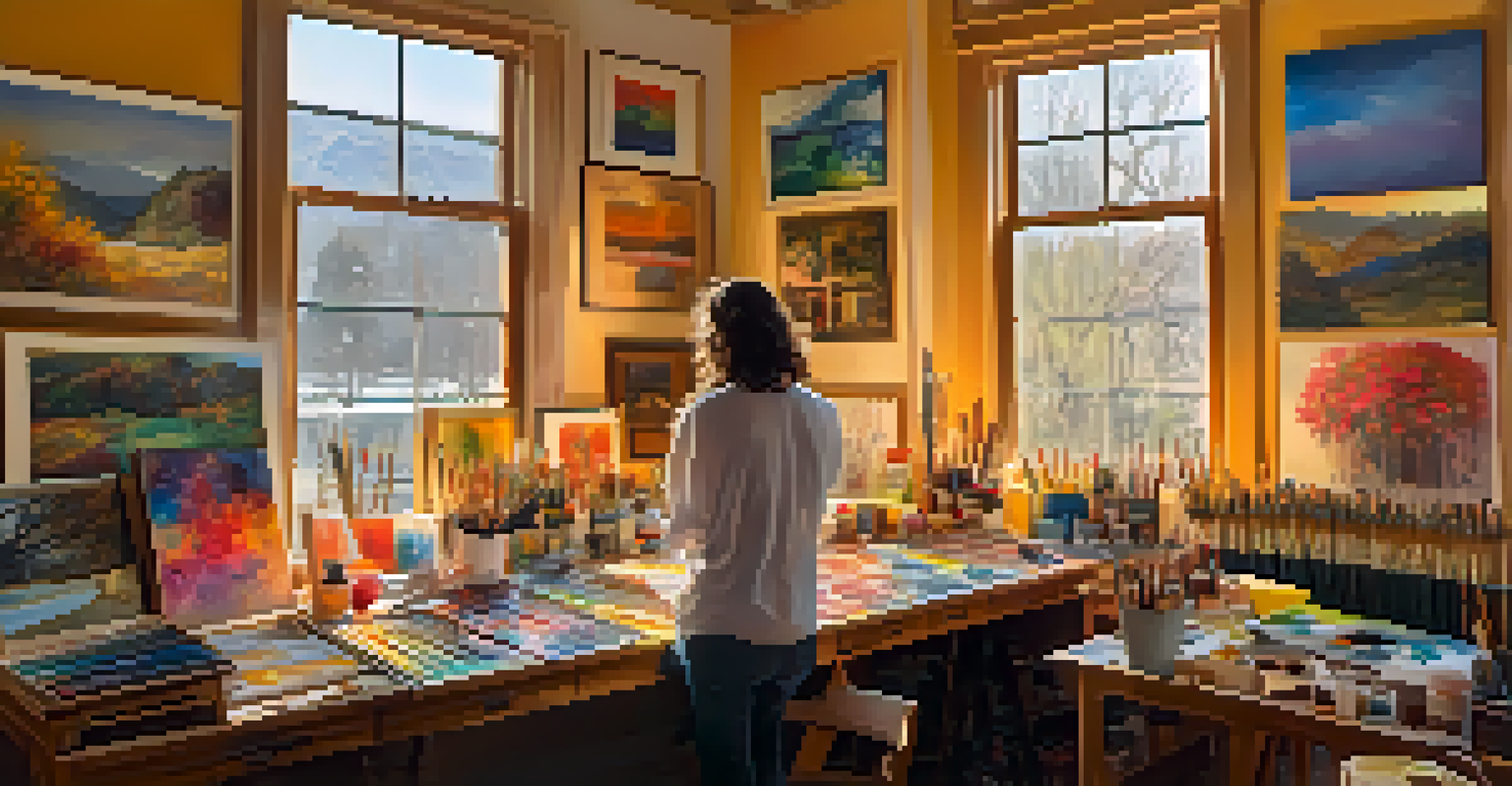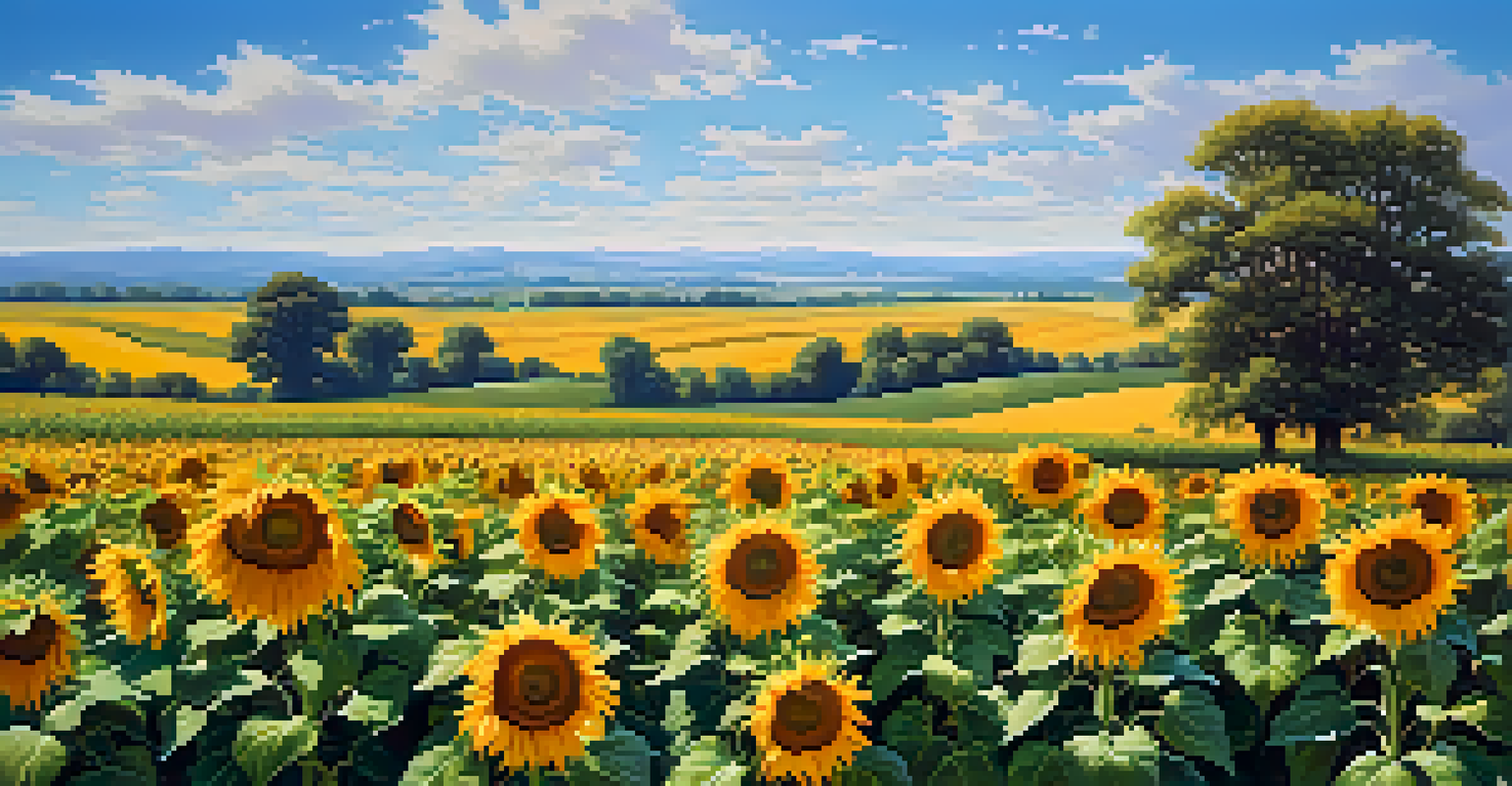Entheogens: A Pathway to New Forms of Expression

Understanding Entheogens: A Brief Overview
Entheogens are substances that can alter consciousness and enhance spiritual experiences. Often derived from plants or fungi, these compounds have been used for centuries in various cultures for ritualistic and healing purposes. They are believed to open pathways in the brain, leading to profound insights and creative breakthroughs.
Psychedelics can help us to understand ourselves better and tap into the depths of our creativity.
Many artists and thinkers have turned to entheogens as a way to tap into deeper layers of creativity. The experience can bring about a sense of interconnectedness, allowing individuals to see the world from new perspectives. This shift in perception can spark innovative ideas and artistic expressions that might not emerge under ordinary circumstances.
While entheogens are gaining popularity in modern society, it’s essential to approach them with respect and caution. The journey they offer can be transformative, but it's crucial to understand their effects and legal status in different regions before embarking on such an experience.
Historical Use of Entheogens in Cultural Practices
Throughout history, various cultures have utilized entheogens in their spiritual and healing practices. Indigenous tribes in the Amazon, for example, have used ayahuasca, a potent brew, to connect with the divine and gain insights for their communities. These practices highlight the deep-rooted relationship between altered states of consciousness and cultural expression.

Interestingly, many ancient civilizations employed entheogens in their religious ceremonies. The Greeks had their Eleusinian Mysteries, which involved the consumption of a mysterious drink believed to induce profound visions. Such traditions illustrate how these substances have been integral to human expression and understanding of the universe.
Entheogens Enhance Creativity
These substances can promote neuroplasticity and emotional openness, leading to increased creative expression.
As we draw lessons from these historical practices, it becomes clear that entheogens can bridge the gap between individual experience and collective expression. By understanding their significance, we can appreciate the rich tapestry of human creativity influenced by these substances.
The Science Behind Entheogens and Creativity
Recent studies have begun to shed light on how entheogens affect the brain and enhance creativity. Research indicates that these substances can promote neuroplasticity, allowing for new connections between neurons. This plasticity is crucial for creative thinking, as it enables individuals to break free from conventional thought patterns.
The experience of creativity is a process of discovery that can be enhanced through altered states of consciousness.
Moreover, entheogens can increase emotional openness and reduce inhibitions, making it easier for individuals to express their thoughts and feelings. This combination of enhanced connectivity and emotional freedom can lead to a surge in creative output, whether through art, music, or writing. Many artists report experiencing profound insights and a deeper connection to their work during these altered states.
However, it's important to note that the effects of entheogens can vary greatly from person to person. While some might find inspiration and clarity, others may encounter challenging experiences. Understanding the science behind these compounds can help individuals navigate their creative journeys with awareness and intention.
Modern Artists and Entheogenic Inspiration
Many contemporary artists openly credit entheogens for sparking their creativity. Musicians, visual artists, and writers often speak about the profound experiences they have had while under the influence of these substances. For instance, iconic figures like Aldous Huxley and Brian Eno have explored the relationship between psychedelics and artistic innovation.
These artists often describe entheogens as tools for unlocking new dimensions of their creativity. The experience can lead to unique ideas, themes, and styles that resonate with audiences on a deeper level. By pushing the boundaries of conventional expression, they invite others to explore their own creative potential.
Historical Significance of Entheogens
Various cultures have used entheogens for spiritual and healing practices, highlighting their integral role in human creativity.
The influence of entheogens in modern art speaks to the timeless quest for inspiration. As artists continue to experiment with these substances, they contribute to a growing dialogue around the intersection of creativity and consciousness.
Navigating the Risks of Entheogenic Experiences
While entheogens can offer incredible insights and creative inspiration, they are not without risks. It's essential to approach these substances with caution, as the experience can be unpredictable. Factors such as dosage, setting, and mental state play a significant role in shaping the journey.
Some individuals may experience anxiety, paranoia, or overwhelming emotions during their trips, which can hinder creativity instead of enhancing it. Therefore, preparation and a safe environment are crucial for a positive experience. Many recommend having a trusted guide or mentor to help navigate the process.
Education around entheogens is also vital. By understanding their potential effects and risks, individuals can make informed decisions about whether to incorporate them into their creative practices. This awareness fosters a responsible and respectful approach to these powerful substances.
Entheogens and the Future of Creative Expression
As society becomes more open to discussing mental health and alternative therapies, entheogens are gaining recognition for their potential to foster creativity. This shift could lead to new artistic movements that prioritize exploration and self-discovery. Artists may increasingly integrate these substances into their creative processes, challenging traditional norms.
Moreover, the growing interest in psychedelics for therapeutic purposes is paving the way for a broader understanding of their benefits. As research continues to unravel the complexities of these substances, we may find innovative ways to harness their power for creative expression.
Navigating Risks is Essential
Approaching entheogens with caution and understanding their effects is crucial for a safe and positive creative experience.
The future of entheogens in the arts is bright, and as more artists share their experiences, it will inspire others to explore their creative potentials. This ongoing exploration could redefine how we view creativity and its sources.
Conclusion: Embracing the Journey of Expression
Entheogens have a unique capacity to inspire and transform the creative process. By connecting with deeper aspects of ourselves, we can unlock new forms of expression that resonate with our inner truths. It's a journey that invites us to explore the unknown and embrace the myriad possibilities within our creativity.
As we reflect on the historical and modern uses of entheogens, it becomes evident that they are more than just substances; they are gateways to self-discovery and artistic innovation. The stories of artists who have embraced these journeys inspire us to consider our relationship with creativity and the tools we use to express it.

Ultimately, whether one chooses to explore entheogens or not, the essence of creativity lies in the willingness to venture beyond the familiar. Embracing this journey can lead to profound insights and new forms of expression that enrich our lives and the world around us.